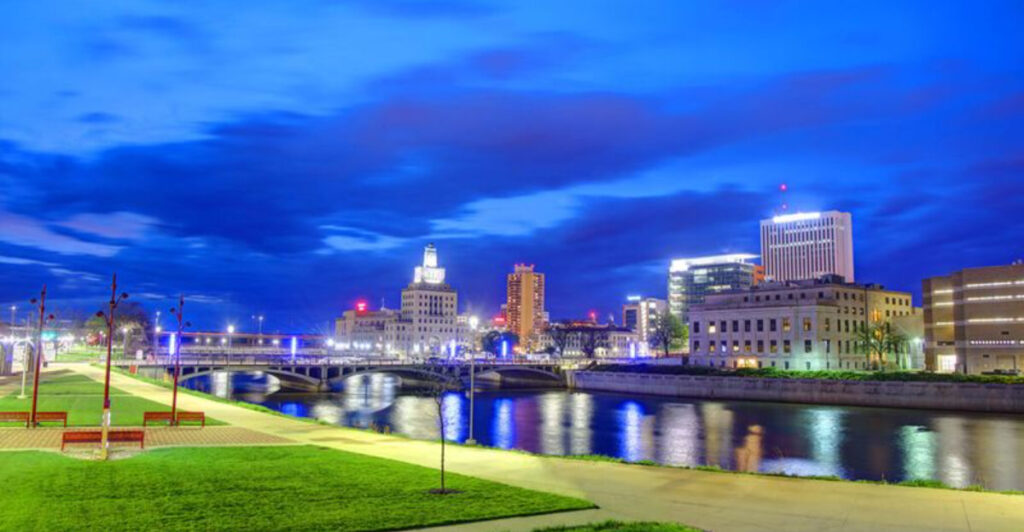Finding a safe place to call home is a top priority for many families and individuals across America. Safety isn’t just about low crime rates – it also includes financial stability, natural disaster risks, and access to quality healthcare. Based on the latest data and safety metrics from credible sources, we’ve compiled this list of America’s 20 safest cities for 2025, all with populations over 100,000.
1. Boise, Idaho: Mountain Safety Haven
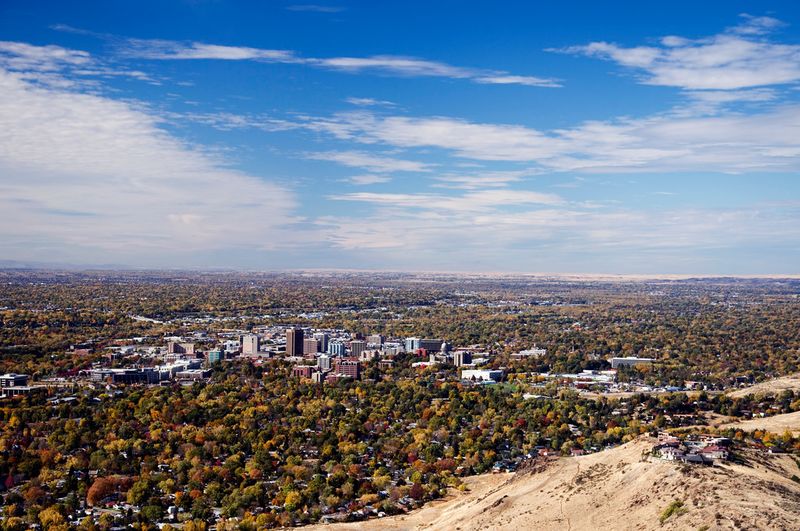
Nestled in the foothills of the Rocky Mountains, Boise offers remarkable safety with violent crime rates 60% below the national average. The city’s proactive community policing programs have contributed to steadily declining crime rates since 2020.
Boise residents enjoy minimal natural disaster risk – no hurricanes, rare tornadoes, and minimal earthquake concerns plague this inland city. The stable economy boasts unemployment rates consistently below 4%, creating financial security that further enhances overall safety.
Outdoor enthusiasts appreciate the 25-mile Greenbelt pathway system that connects neighborhoods, providing safe recreation spaces that strengthen community bonds. With excellent schools and affordable housing (median home price around $450,000), Boise delivers safety without sacrificing quality of life.
2. Yonkers, New York: Big City Safety
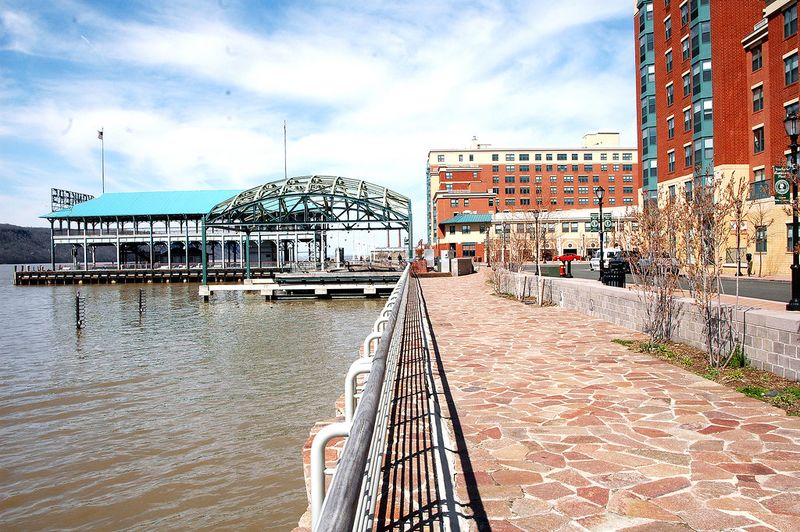
Just north of bustling New York City lies Yonkers, where residents enjoy metropolitan amenities without big-city crime concerns. Police statistics show violent crime rates 40% below the national urban average, making it the safest large city in the Northeast corridor.
Yonkers benefits from robust emergency services and a modernized infrastructure that handles severe weather effectively. The city’s location shields it from the worst hurricane impacts while providing quick access to NYC’s world-class medical facilities.
Community pride shines through well-maintained parks and active neighborhood associations that organize regular safety meetings. Though housing costs exceed national averages, Yonkers’ strong job market and excellent public transit create financial stability, landing it consistently among America’s safest urban environments.
3. Cedar Rapids, Iowa: Midwestern Security Star
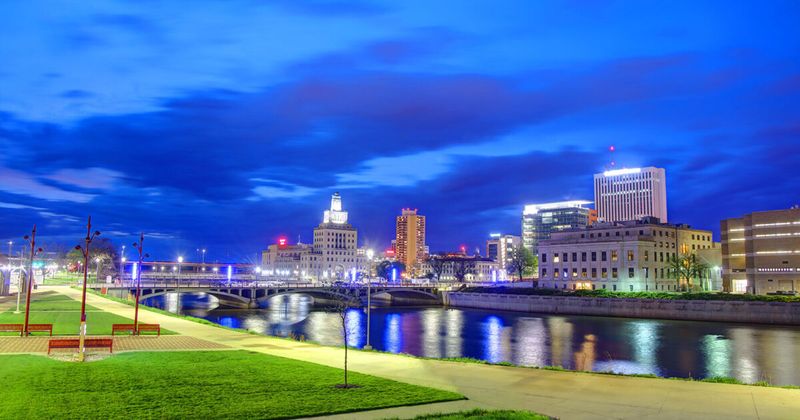
Cedar Rapids has transformed adversity into advantage. After devastating floods in 2008, this resilient city implemented one of America’s most comprehensive flood mitigation systems, reducing natural disaster risk dramatically.
Crime statistics tell an impressive story – violent crime decreased 12% in 2023 alone. Community policing initiatives deserve credit, with neighborhood watch participation reaching record levels last year.
Affordable living costs (median home price: $180,000) create financial security uncommon in many American cities. Residents enjoy excellent healthcare access, with three major medical centers serving a population of just 136,000. The city’s diverse economy – spanning healthcare, manufacturing, and technology – provides stable employment and contributes to Cedar Rapids’ remarkable 15-year run among America’s safest mid-sized cities.
4. Columbia, Maryland: Planned Community Excellence
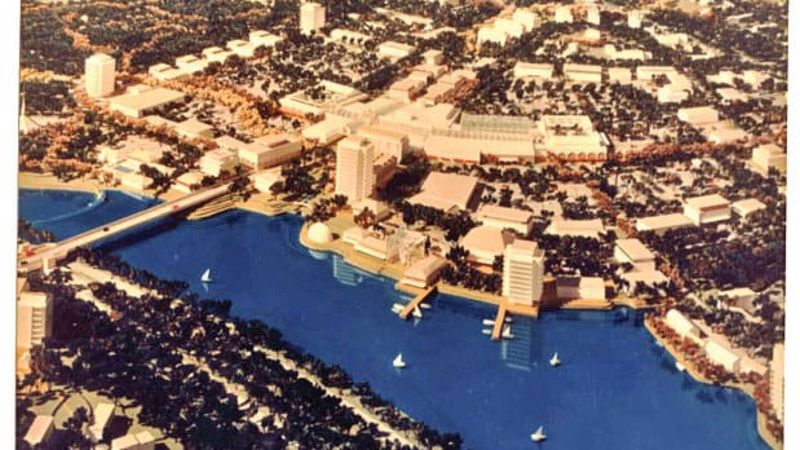
Columbia stands as a testament to thoughtful urban planning. Designed from scratch in the 1960s, this planned community incorporated safety features into its very DNA – with separated pedestrian pathways, strategic lighting, and neighborhood villages built around community centers.
The results speak volumes: violent crime rates 70% below the national average and property crime 50% lower than surrounding areas. Columbia’s unique design creates natural surveillance, with homes overlooking common areas and walking paths.
High median household incomes ($115,000+) contribute to exceptional schools and well-funded emergency services. The city’s location, away from coastal areas but close to major medical facilities, minimizes both natural disaster risk and healthcare concerns. Columbia demonstrates how intentional design can create extraordinary safety outcomes – a model many newer communities now emulate.
5. Virginia Beach, Virginia: Coastal Security Leader

Virginia Beach defies the stereotype that tourist destinations suffer from high crime. This coastal city recorded just 95 violent crimes per 100,000 residents in 2023 – among the lowest rates for any large American city.
Forward-thinking leadership has addressed the city’s main vulnerability – flooding – through a massive $568 million infrastructure investment. New stormwater systems, elevated roads, and reinforced shorelines now protect residents from rising sea levels and storm surges.
The strong military presence from nearby Naval Station Norfolk contributes to community stability and emergency preparedness. Residents benefit from excellent healthcare options, with five major hospitals serving the area. Virginia Beach proves that coastal living doesn’t require safety compromises, blending beach town charm with big-city security measures and impressive emergency response capabilities.
6. Irvine, California: Master-Planned Perfection
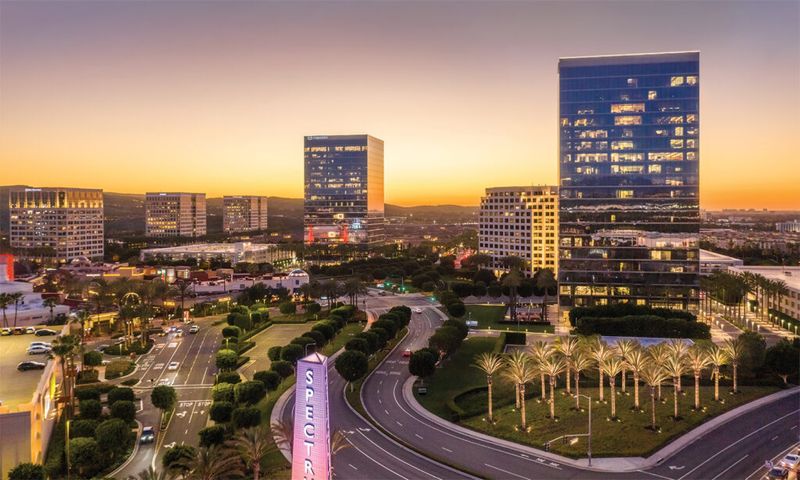
Meticulously designed from its inception, Irvine stands as California’s safety champion. The city’s master plan separated residential areas from commercial zones while creating village-like neighborhoods connected by bike paths instead of major roads.
Crime statistics are remarkable – Irvine consistently reports the lowest violent crime rate among U.S. cities with populations over 250,000. Property crime hovers around 40% below the national average despite the affluent population.
Though California faces earthquake and wildfire risks, Irvine’s modern building codes exceed state requirements, and its location away from major fault lines reduces seismic concerns. The city maintains a dedicated disaster response team that conducts regular drills. With exceptional schools funded by a strong tax base (median income: $128,000), Irvine demonstrates how thoughtful urban planning creates not just safety, but quality of life unmatched in most large cities.
7. Fargo, North Dakota: Northern Prairie Refuge
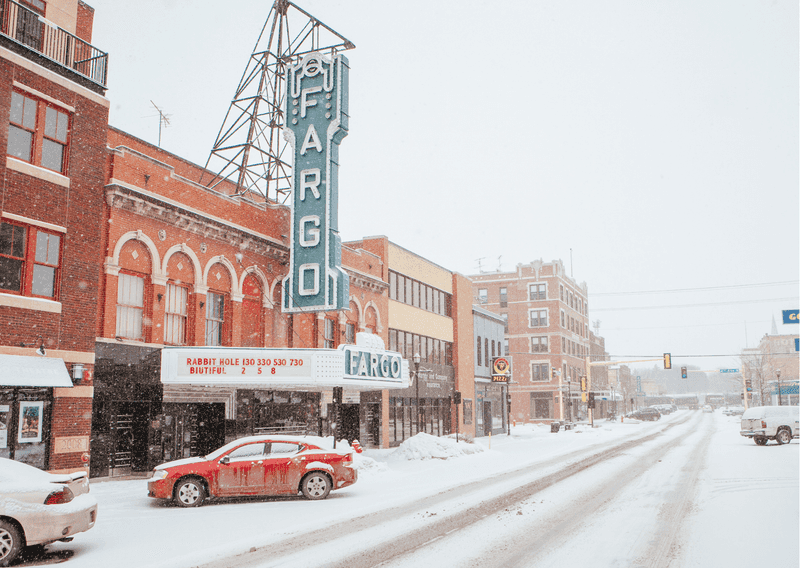
Fargo embraces its northern location as a safety advantage. The cold climate naturally deters certain types of crime, while the city’s distance from coastal areas eliminates hurricane and tsunami risks entirely.
Recent investments in flood control have addressed the Red River’s historical threats. The comprehensive system now protects neighborhoods that once faced regular evacuation orders, dramatically improving disaster resilience.
Community cohesion stands out in Fargo, where neighborhood watch participation exceeds 70% – nearly triple the national average. The robust economy, anchored by healthcare, education, and technology sectors, maintains unemployment below 3% even during national downturns. Though winters bring challenging weather, Fargo’s excellent emergency services and infrastructure maintenance ensure resident safety year-round, contributing to its consistent ranking among America’s safest mid-sized cities.
8. Chesapeake, Virginia: Suburban Sanctuary
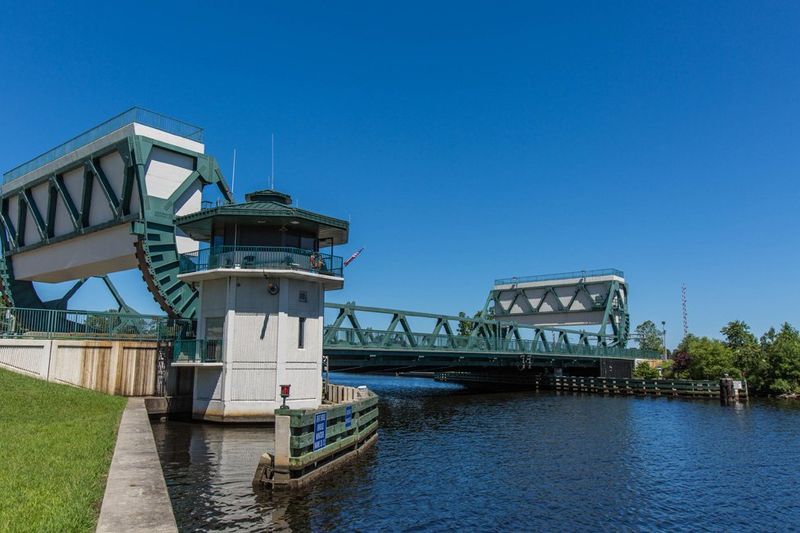
Chesapeake balances rural charm with urban amenities, creating a uniquely safe environment. The sprawling city (340+ square miles) maintains separate, distinct communities, each with dedicated police patrols that contribute to response times averaging under four minutes.
Crime statistics highlight Chesapeake’s success – violent crime rates 30% below the national average and property crime steadily declining since 2018. The city’s innovative community policing program pairs officers with specific neighborhoods for years, building relationships that deter crime.
Though located in a hurricane-vulnerable region, Chesapeake’s inland position provides protection from the worst coastal impacts. The city has invested heavily in emergency management, with seven fully-staffed disaster response centers. Residents enjoy excellent healthcare access and a diverse economy that weathered recent national downturns better than most comparable cities, adding financial security to Chesapeake’s impressive safety profile.
9. Vancouver, Washington: Pacific Northwest Haven
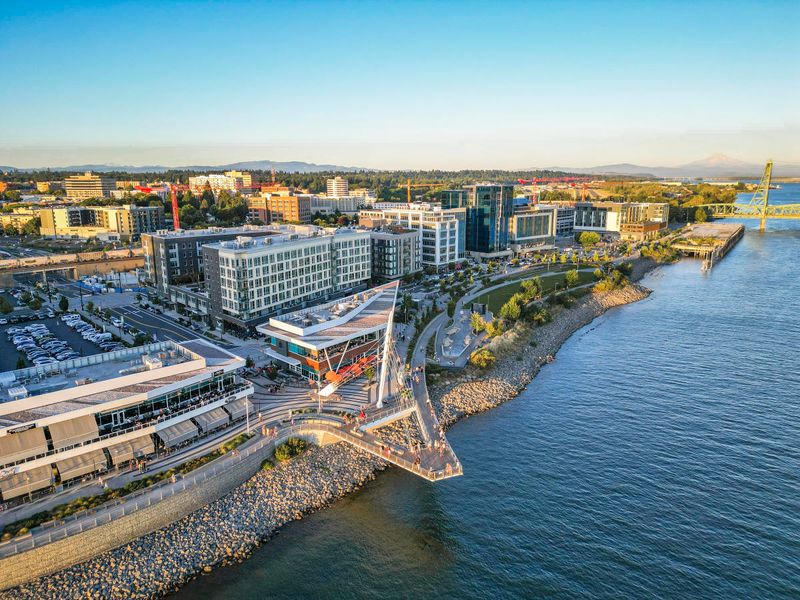
Vancouver offers Pacific Northwest beauty without the safety concerns plaguing some larger cities in the region. Crime rates dropped 9% in 2023 alone, continuing a five-year downward trend that police attribute to expanded community engagement programs.
Situated on the Columbia River’s north bank, Vancouver enjoys natural protection from many disasters. The city sits outside major earthquake fault zones and faces minimal wildfire threat compared to other western locations.
Residents benefit from Washington’s strong healthcare system, with four major medical facilities serving a population of just under 200,000. The diverse economy spans healthcare, technology, and manufacturing, creating financial stability that further enhances safety. Vancouver’s commitment to pedestrian-friendly infrastructure has reduced traffic accidents by 15% since 2020, making it one of the region’s safest cities for walkers and cyclists as well as homeowners.
10. Honolulu, Hawaii: Paradise with Protection
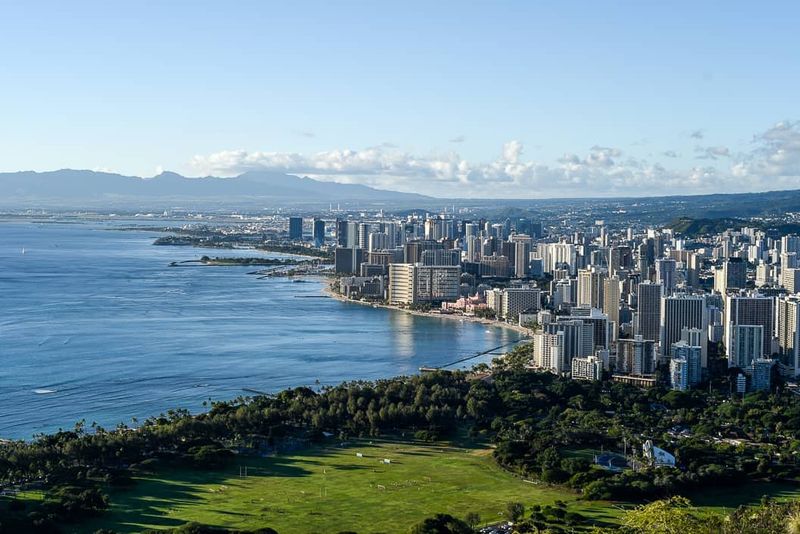
Honolulu combines tropical paradise with impressive safety credentials. The city’s violent crime rate remains remarkably low – 70% below the national average – despite hosting millions of tourists annually.
Hawaii’s geographical isolation provides natural protection from many mainland threats. Hurricanes rarely reach the islands, and the state’s strict building codes (among America’s most rigorous) mitigate earthquake concerns.
The city maintains one of the nation’s most sophisticated emergency response systems, tested regularly through tsunami and hurricane drills. Healthcare quality ranks among America’s best, with Queen’s Medical Center designated as a Level I trauma center. Though rising sea levels present long-term challenges, Honolulu’s climate adaptation plan includes $2.3 billion in infrastructure improvements to protect coastal areas. For residents seeking safety with unmatched natural beauty, Honolulu delivers both in abundance.
11. Madison, Wisconsin: Lakeside Security Success
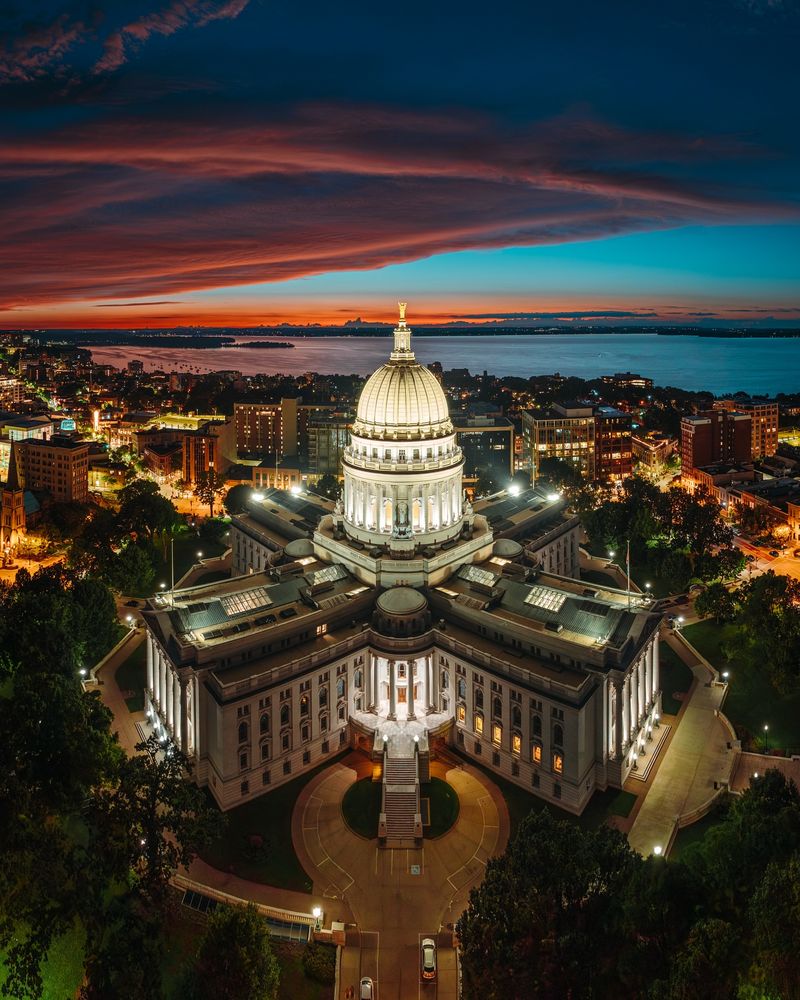
Madison’s unique geography – situated on an isthmus between two lakes – creates natural boundaries that enhance neighborhood security and community cohesion. The city’s progressive approach to policing emphasizes mental health response teams alongside traditional officers.
Environmental safety stands out in Madison, which faces minimal natural disaster risk. No hurricanes reach this inland location, tornado activity is rare, and the city’s distance from major fault lines eliminates earthquake concerns.
The presence of the University of Wisconsin creates a well-educated population and strong economic foundation. Madison’s healthcare system ranks among the nation’s best, with university-affiliated research hospitals providing cutting-edge care. Winter brings snow challenges, but the city’s exceptional infrastructure maintenance ensures resident safety year-round. Madison demonstrates how midwestern values combined with progressive policies create one of America’s safest capital cities.
12. Huntsville, Alabama: Rocket City Safety
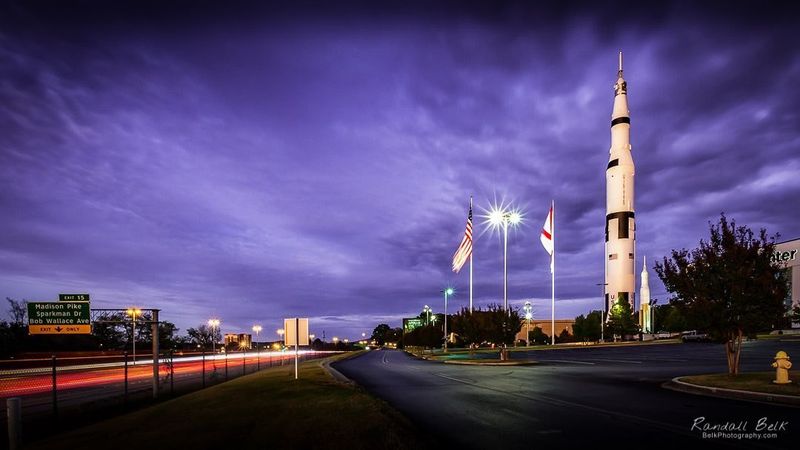
Huntsville’s aerospace industry attracts highly educated professionals who value and contribute to community safety. The city’s property crime rate (705 per 100,000) ranks among the nation’s lowest for metropolitan areas, reflecting effective policing and neighborhood vigilance.
Though located in the Southeast’s tornado region, Huntsville maintains one of America’s most advanced weather monitoring systems. The presence of NASA and military facilities has created exceptional emergency response capabilities beyond what typical cities this size provide.
The robust economy, anchored by aerospace, defense, and technology sectors, ensures financial stability even during national downturns. Unemployment consistently remains below 4%, creating economic security that enhances overall safety. Huntsville demonstrates how a specialized economy can create not just prosperity but also fund the infrastructure and services necessary for exceptional public safety, making it the Southeast’s standout security success.
13. Laredo, Texas: Border City Breakthrough
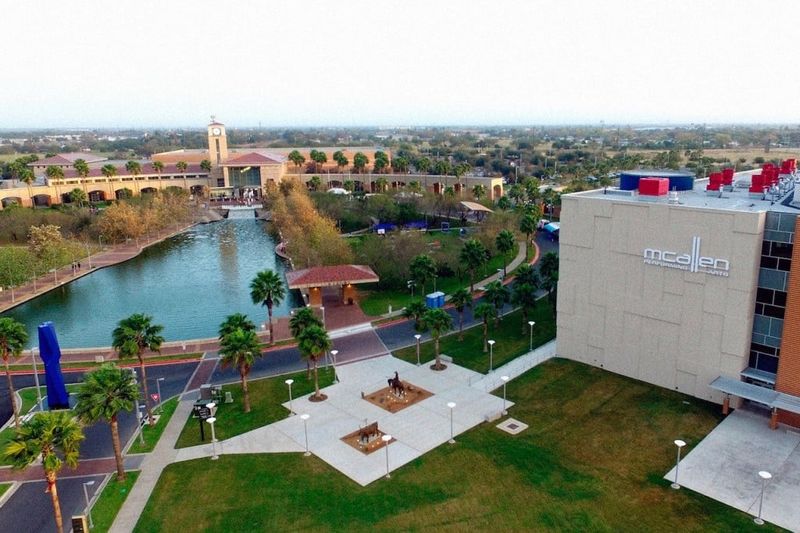
Laredo defies border city stereotypes with impressive safety statistics. This Texas community ranks #1 for safety among all Texas cities according to WalletHub’s comprehensive analysis, which examines everything from crime rates to disaster preparedness.
Property crime here runs significantly below the national average – 30% lower than comparable cities. Laredo’s unique approach includes extensive community involvement in safety planning, with neighborhood watch participation exceeding 60% of households.
The city’s inland location shields it from hurricane threats that impact coastal Texas communities. Meanwhile, Laredo’s robust emergency management system, developed to handle potential border-related contingencies, provides capabilities exceeding most cities its size. Though financial metrics show room for improvement, community cohesion creates security that transcends economic indicators. Laredo demonstrates how strong community bonds and cultural pride can overcome challenges to create one of America’s safest mid-sized cities.
14. Sioux Falls, South Dakota: Prairie Metropolis Security
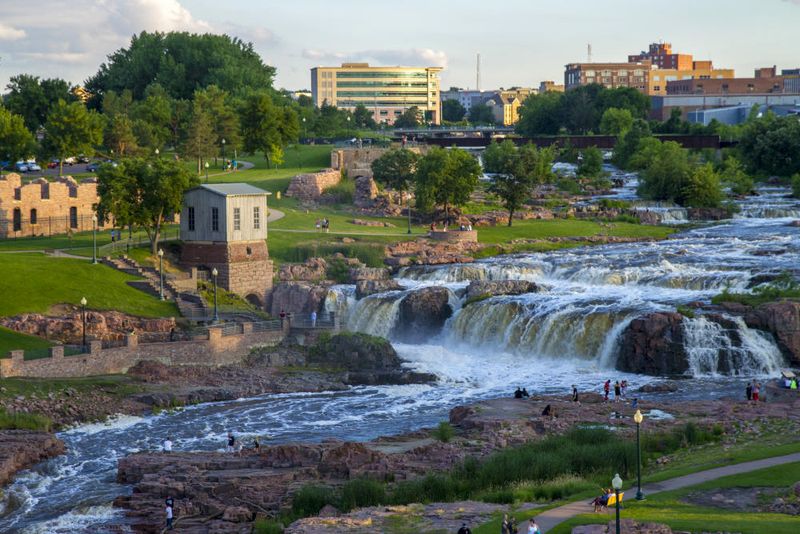
Sioux Falls combines small-town safety with big-city amenities. Crime rates have remained stable despite 25% population growth since 2010 – a remarkable achievement attributed to the city’s community-oriented policing and neighborhood engagement programs.
Financial stability stands out in Sioux Falls, which weathered recent economic downturns better than most American cities. Unemployment rarely exceeds 3%, and the diverse economy spans healthcare, financial services, and manufacturing sectors.
The city’s location shields it from many natural disasters – hurricanes never reach this inland location, and earthquake risk is minimal. Though prairie storms occur, Sioux Falls maintains excellent emergency response capabilities, with average 911 response times under four minutes citywide. The combination of economic opportunity, affordable living costs, and exceptional public safety makes Sioux Falls a standout in the northern plains region and a model for mid-sized cities nationwide.
15. Chula Vista, California: SoCal Safety Leader
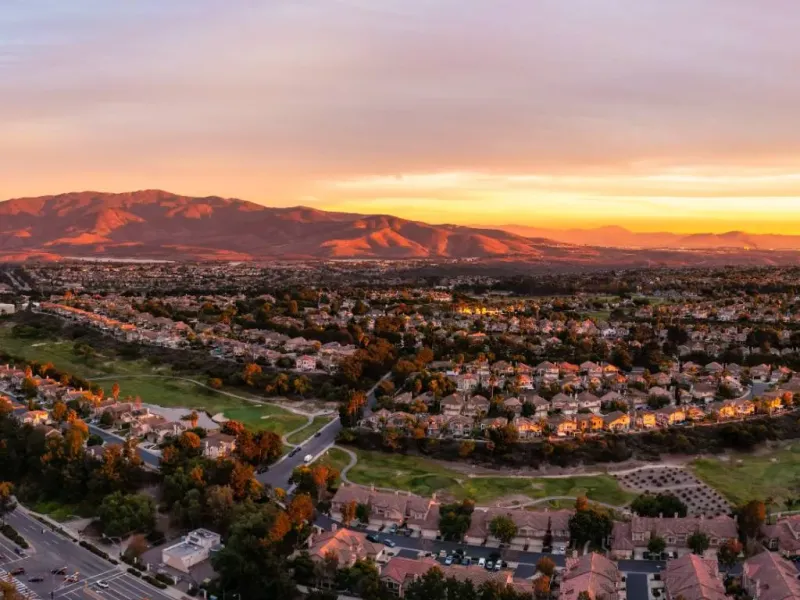
Chula Vista stands out as Southern California’s safety success story. Located just south of San Diego, this diverse city has transformed former industrial areas into vibrant, safe neighborhoods through innovative urban planning and community policing.
Crime statistics tell an impressive story – violent crime rates 40% below the California average and steadily declining property crime since 2018. The city’s gang prevention programs have become national models, dramatically reducing youth violence over the past decade.
Though California faces earthquake and wildfire risks, Chula Vista’s coastal location moderates these threats. The city sits outside primary wildfire zones and experiences less extreme heat than inland areas. Meanwhile, strict building codes exceed state requirements for seismic safety. With excellent schools and growing economic opportunities in healthcare and technology, Chula Vista demonstrates that Southern California living can combine safety with diversity and coastal beauty.
16. Fremont, California: Bay Area Beacon

Fremont stands as the Bay Area’s safety champion, maintaining remarkably low crime despite proximity to larger urban centers. The city’s violent crime rate (216 per 100,000) ranks among the nation’s lowest for communities its size.
Strategic policing deserves much credit. Fremont pioneered neighborhood-specific patrol patterns based on data analysis, resulting in rapid response times averaging under four minutes citywide.
The highly educated population (over 50% hold bachelor’s degrees) contributes to both safety and prosperity. Median household income exceeds $140,000, funding excellent schools and public services. Though earthquake risk exists throughout the Bay Area, Fremont’s modern infrastructure includes seismic retrofitting for older buildings and strict codes for new construction. The city’s combination of Silicon Valley opportunity, cultural diversity, and exceptional safety makes it a standout in a region not typically known for low crime rates.
17. Glendale, California: Los Angeles County Safety Oasis
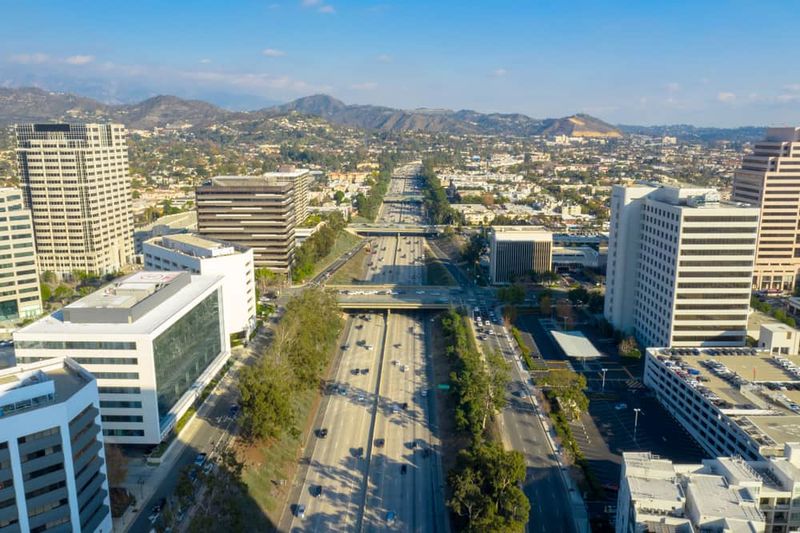
Glendale emerges as Los Angeles County’s safety standout, maintaining crime rates far below surrounding communities. The city’s violent crime rate (227 per 100,000) ranks among the lowest in Southern California – remarkable for a community of 200,000 in a major metropolitan area.
Community engagement drives Glendale’s success. The city’s unique neighborhood watch program involves over 70% of residents, creating natural surveillance that deters criminal activity.
Though earthquake risk exists throughout Southern California, Glendale has invested heavily in seismic safety. The city maintains strict building codes and regular infrastructure inspections that exceed state requirements. Meanwhile, Glendale’s location away from coastal areas reduces tsunami concerns. With excellent schools, diverse dining and shopping options, and proximity to downtown Los Angeles, Glendale proves that safety and urban amenities can coexist – making it a prized location for families seeking security without sacrificing metropolitan convenience.
18. Salem, Oregon: Capital City Sanctuary
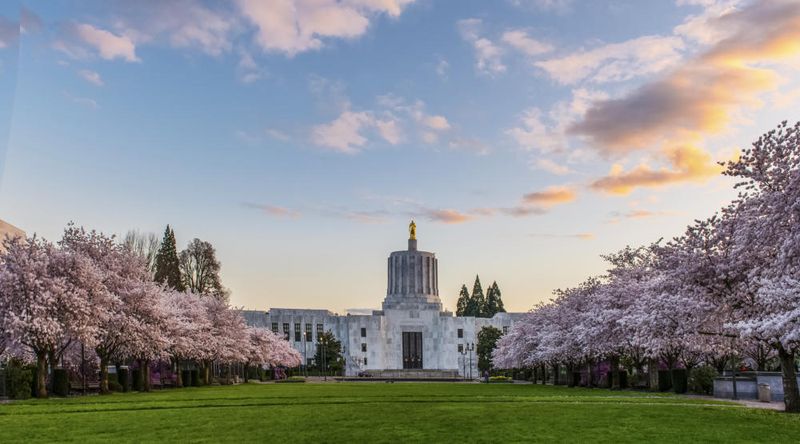
Salem combines political importance with impressive safety credentials. Oregon’s capital city benefits from excellent emergency planning – its comprehensive disaster preparedness program has become a model for mid-sized American cities.
Natural disaster risk remains remarkably low in Salem. The city sits inland from tsunami zones, experiences minimal earthquake activity compared to California, and faces lower wildfire threat than many western locations.
Though violent crime saw modest increases in recent years, Salem’s rates remain well below national averages for cities its size. The police department’s community outreach programs have expanded significantly since 2020, focusing on mental health response and youth engagement. Salem’s diversified economy spans government, healthcare, and agriculture sectors, creating financial stability that supports public safety initiatives. For those seeking Pacific Northwest living without the safety concerns of larger cities like Portland or Seattle, Salem offers an appealing alternative.
19. Santa Rosa, California: Wine Country Windfall
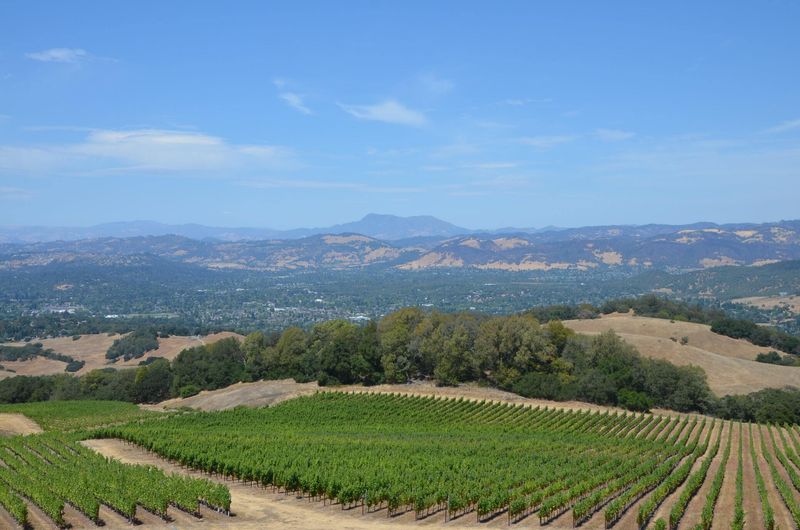
Santa Rosa has emerged stronger from adversity. After devastating wildfires in 2017, this Wine Country hub implemented one of California’s most comprehensive disaster response systems, dramatically improving emergency preparedness.
Crime statistics reflect community commitment to safety – violent crime rates 35% below the California average and property crime declining steadily since 2019. The police department’s innovative youth outreach programs have reduced juvenile crime by over 40% in five years.
Though wildfire risk remains a concern, Santa Rosa has enacted strict building codes and created defensive space requirements that exceed state standards. The city maintains an advanced early warning system that proved effective during recent fire seasons. With its combination of natural beauty, economic opportunity in wine tourism and healthcare, and strong safety record, Santa Rosa demonstrates remarkable resilience while providing security uncommon in California cities its size.
20. Nampa, Idaho: Rocky Mountain Refuge
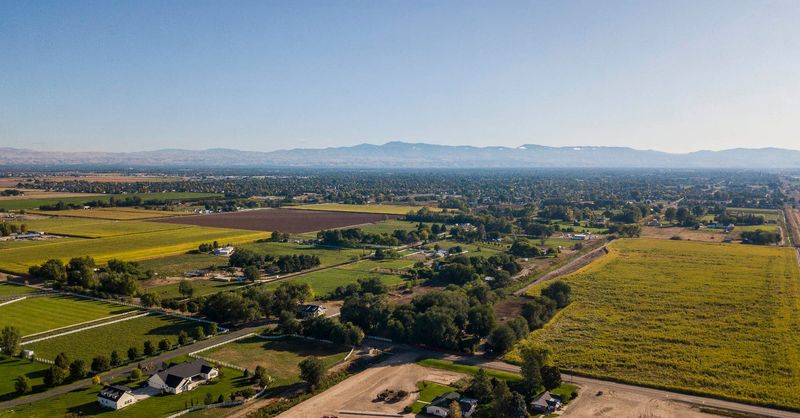
Nampa delivers small-town safety with growing-city amenities. Located just outside Boise, this community of 118,000 maintains remarkably low crime rates – just 3.65 violent crimes per 1,000 residents, significantly below the national average.
Community policing drives Nampa’s success. The police department dedicates 30% of patrol time to proactive community engagement rather than just responding to incidents, creating relationships that prevent crime before it occurs.
Natural disaster risk remains minimal in Nampa. The city sits in a region with low earthquake activity, no hurricane threat, and minimal tornado risk. Though summer wildfires can affect air quality, direct fire danger to the city is low. Nampa’s growing economy spans agriculture, manufacturing, and healthcare sectors, creating financial stability that further enhances safety. For families seeking affordable living without compromising security, Nampa offers an appealing combination of Rocky Mountain beauty, strong community values, and exceptional safety metrics.

